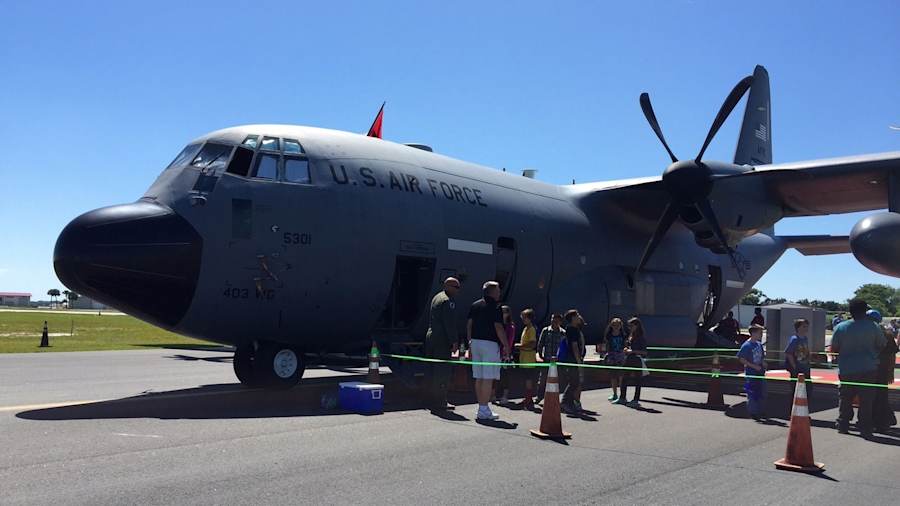JACKSONVILLE, Fla. – If you've ever wondered how meteorologists gather important data on severe storms, hurricane hunters gave the public a first-hand look Thursday at the process that goes into forecasting storms.
While most people evacuate from hurricanes, a special group of men and women put their lives on the line to fly into the storm.
Recommended Videos
Hurricane hunters and experts from the National Oceanic and Atmospheric Administration stopped by the Northeast Florida Regional Airport to bring awareness to hurricane preparedness.

The Hurricane Awareness Tour gave kids and weather enthusiasts the opportunity to climb onboard a U.S. Air Force Reserve WC-130J hurricane hunter aircraft (pictured) and a NOAA G-IV aircraft (pictured above), both of which are used in hurricane forecasting.
The planes can fly directly through the eye of a storm to collect and transmit data by satellite directly to NOAA'S National Hurricane center. These aircraft are equipped with the latest technology and the G4 jet is one of the agency's fleet of highly specialized research aircrafts.
Jason Mansour, the aircraft commander of NOAA'S G4 jet, said it's also nice that the aircraft operates much differently from the C130.
"The C130 is like a pick-up truck, but the G4 is like a Ferrari," he said. "It is so smooth and it really takes care of the crew and the aircraft, and it is very safe. It is an absolute treat."
Dr. Rick Knabb from the National Hurricane Center said he hopes everyone that attended the tour and climbed aboard the jets will leave with a better understanding of hurricanes and hurricane safety.
"What I hope people will do is have the kids go home, get really excited, talk to mom and dad, and want to put together a hurricane preparedness plan for the entire family," Knabb said.

Knabb explained that when it comes to a plan, there are four easy steps to follow to prepare for the next hurricane: evacuation, supplies, insurance and strengthening your home.
"First thing I think about when it comes to a plan is evacuation planning. Find out if you live near an evacuation zone and plan ahead of time how you're going to get there," Knabb said. "Next, go shopping. Get the supplies you desperately need to get through the storm and the aftermath. If you wait until a hurricane warning to go shopping, you're going to be waiting in these long lines, irritated and you may not even get what you need.
"Then, go visit your insurance plan. If you make sure you've got all the coverage you need, whether you rent or own, and you get flood insurance, then you'll have the peace of mind that you can recover after a storm and it won't be such a huge financial hit," he said. "Finally, do whatever you can do to strengthen your home. Find test-approved shutters."
He added that the use of drones to improve research is something experts are very interested in having in the future.
"We're keenly interested to see how unmanned aircraft and resources can impact our research," Knabb said. "We're always wanting to improve what we have to apply to the forecast process. If we can continue to get the data that we have learned how to effectively get and we can still be cost effective for the government, then we can make those operational changes. But for the time being, these are research efforts that we are very interested in having in the future."


